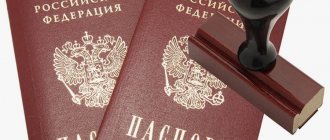Business lawyer > Accounting > Taxes > What is 3-NDFL in simple words: what is it for?
This abbreviation is mentioned quite often, people pronounce it, but it is not clear what they are talking about? What is it and why is it necessary? In reality, everything is quite simple, because we are talking about a special document that is filled out by citizens of the Russian Federation at the end of each calendar year, but only in cases where they received any income during that very year. This article talks about what 3-NDFL is in simple words for ordinary people.
Income for ordinary workers
Every employee of an enterprise, both private and public, pays income tax, which is determined by the state and amounts to 13 percent of the amount of income. In this case, the accounting department takes care of all the calculations and automatically takes a percentage from the amount earned. So if:
Income of the population
- You are an employee of an ordinary company and do not receive any additional income other than the basic salary, in this case there is no point in worrying, because in this case you can forget about the tax return.
- You receive additional income during the year, then you will have to fill out such a declaration.
There are also cases with non-permanent additional income, when a person works in an organization, but at the same time:
- Sells some real estate or property that is in his ownership, it can be a car, apartment, house, plot or any other type of property
- Wins a lottery, receives any valuable gifts, etc., and does not pay income tax
- Sells any securities
- Rent out property
- Opens his own individual entrepreneur, is a notary or lawyer
Deadlines for submitting documents
The deadlines for submitting the 3-NDFL declaration in 2021 have not changed: you must download, fill out and submit the package of documents for 2020 no later than 04/30/2021. It is worth considering that April 30 is Friday, a shortened working day. Therefore, do not put off filing reports until the last minute. As for receiving tax deductions, you can submit papers within 3 years from the end of the year in which the taxpayer became entitled to such a deduction. Payment of the declared tax amount must be made before July 15, 2021 (if income is received in 2020).
Compensation for taxes imposed on income
The law provides not only the possibility of withholding taxes from citizens, but also the possibility of returning partially or even completely. Income tax can be refunded for one year or for several past years.
Compensation of expenses
The 3-NDFL tax return has enormous potential for the return of various tax payments in a wide variety of cases. Here is a list of some transactions for which the tax payment can be partially or fully refunded:
- Purchase of property (real estate)
- Paid training, also if payment is made for another person, relative, etc.
- Payment of voluntary pension contributions, contributions to charity
- Treatment for money
This list is expanding every year, so you shouldn’t miss a good chance to get some of the money paid back. But first you need to learn how to fill out the 3-NDFL tax return.
Declaration 3-NDFL for 2020
Russian tax legislation provides for the possibility of reducing the size of the tax base for individuals who have made a certain type of expense. In order to receive compensation of this kind, it is necessary to fill out the 3-NDFL form, which was approved and last edited by the Federal Tax Service on October 25, 2020, and also additionally attach several more documents to it.
It should be noted that to obtain any type of tax deduction, the taxpayer will not need to use all pages of form 3-NDFL. As a rule, several mandatory sheets are filled out (title sheet, first section, second section and sheet A) and one page dedicated to tax reimbursement for a certain type of embezzlement (sheets of the 3-NDFL form, which begin with the designation D1).
When is it appropriate to submit for verification?
In some situations, individuals do not submit a tax return for consideration and miss the opportunity to refund the tax, and in some, on the contrary, they do it in vain. In this regard, below is a list containing a number of situations in which a deduction is possible:
- When buying real estate. Taxpayers who have purchased a house, land, apartment or room in it can receive a tax discount for such a purchase. Information regarding this procedure is linked to sheet D1 of form 3-NDFL.
- When selling property. Individuals who sell real estate may also qualify for an income tax refund. To do this, in addition to the main pages of the declaration, they will need to fill out sheet D2.
- For providing for children. For all parents raising and providing for at least one child, tax compensation is provided in the form of a cash supplement to wages, which can be obtained by entering the data in the first paragraph of page E1. In addition, this paragraph is also intended for individuals in a preferential category (for example, disabled people or combatants) who want to take advantage of the standard tax deduction.
- For social expenses. All expenses incurred by taxpayers and related to the social group (donations, expenses for medical procedures and medications, payments for education, insurance and some pension contributions) can also be partially compensated to an individual from the state budget. The relevant information must be entered in the second, third and fourth parts of page E1.
- For personal income tax overpaid from investments and professional profits. There is a range of income for which professional deduction is available. We are talking about material resources obtained as a result of private practice, as well as the creation of various objects of copyright. In order to reimburse the tax in such a situation, it is necessary to issue an E2 sheet (it is also intended for investment deductions).
- For income from derivative funds and from transactions with securities. An abbreviation such as PFI stands for the following: “P” - derivative, “F” - financial, “I” - instrument, and means a certain agreement that regulates and fixes the rights to manage the underlying asset. A deduction is also charged on the profit received from such an agreement. To indicate data on income from derivative funds, Form 3-NDFL includes sheet 3, also dedicated to profit, the source of which was securities.
- For profits associated with investment partnerships. Those individuals whose material resources and ideas were aimed at implementing any large-scale project that brought them income as a result can return part of the personal income tax withdrawn from it after filling out sheet 3 of the tax return.
Attention! In some situations, individuals may need to enter information not in sheet E2, but in sheet G, to apply for professional tax compensation. This page must be filled out if the taxpayer is guided by the second or third part of Article 221 or part 2.2. Article 220 of the Tax Code.
Additional purposes for filling out the document
A tax return is prepared not only for the purpose of personal income tax reimbursement. Sometimes individuals have certain debts to the state due to the fact that they did not pay mandatory tax contributions on their earnings, as well as additional sources of income, on time. Therefore, in order to pay off the debt and be clean before the law, they need to pay a certain amount and record this fact in the 3-NDFL form.
And in some situations, tax agents may have questions for individuals regarding the amount and transactions carried out with their income. In order for the taxpayer to report his profits in writing, a declaration form is also used.
Filling out 3-NDFL
In order to understand how to apply for 3-NDFL, you must first understand what this document actually is and what its strange name means. Personal income tax stands for personal income tax, and 3 means the declaration number, or rather its form, because in addition to this certificate, there are also the first, second and fourth forms.
You can fill out this document in different ways:
- By hand, using a pen, and the form itself must be printed
- Using a ready-made form that is filled out in Excel
- Order filling on some website or from a lawyer
- In any online service
- Using the “Declaration” program from the Federal Tax Service
Usually, rarely does anyone fill out a tax return correctly on their own the first time, so the best method would be to fill out the return by hand, but with a pencil, and then circle it with the inspector and correct any possible errors. But still, in this case, you have to perform the calculations yourself.
The best way, if it is possible to use the program specified in the last method, is to use it, because there the declaration sheets are generated automatically and you do not have to perform unnecessary calculations.
Deductions indicated in the 3rd personal income tax declaration
The declaration indicates not only income, but also all tax deductions. These are standard deductions for the employee, children, etc., as well as social and property deductions from the amount of income to reduce the tax base. Tax deductions that were transferred to future periods due to losses of previous years on transactions with securities and on futures transactions are also entered in the appropriate columns. Professional tax deductions for enterprises are also included in 3 personal income taxes.
Standard deductions on your return
The standard deductions that are included in the return are personal and child deductions. You can find out more about this in Article 218 of the Tax Code. It describes in detail what deduction is due to an ordinary employee and what to a preferential category of citizens. An ordinary citizen is entitled to a deduction of 400 rubles, and beneficiaries - up to 3 thousand rubles. This deduction must be made until the payer’s income from the beginning of the year exceeds 40 thousand rubles.
The deduction threshold for a child is 280 thousand rubles. The child deduction is due to the parent if the child is under 18 years of age, and older only if the child is a student or full-time student, or an intern, graduate student, resident, cadet, until the age of 24. Only one parent has a deduction, as well as a guardian, adoptive parent, etc. If the company did not provide deductions for the child to an employee, then he has the right to submit an application and receive all deductions in the current period. Standard deductions must be indicated on sheet G1 of the declaration.
Social deductions in the declaration
Social deductions are amounts not subject to tax, which is provided by law for the following expenses. These are donations, amounts spent on education (your own and your children’s), treatment (your own and family members’), payment of insurance contributions to the funded part of the pension, and contributions paid to non-state pension funds. To enter 3 personal income tax, you must have supporting documents on hand indicating a specific amount of expenses, but not more than 120 thousand rubles for one reporting period. For social payments, sheet G2 is provided, and for pension insurance expenses - sheet G3.
Professional deductions in the declaration
Professional deductions can be included in the declaration by those entrepreneurs who are engaged in certain types of activities that have individual tax conditions. These are entrepreneurs, notaries in private practice, these are lawyers who maintain their own offices, and other entrepreneurs who conduct private practice. The tax deduction is calculated from the total amount of income of the enterprise when confirming the expenses of the enterprise.
E. Shchugoreva
How to fill out the 3NDFL declaration and who needs to do it?
How to fill out a tax return in form 3-NDFL and receive a tax deduction for education, purchase of real estate, treatment and dental implantation:
0
Author of the publication
offline 8 years
Elena Shchugoreva
0
Comments: 0Publications: 208Registration: 02-03-2013
Rules for filing 3-NDFL
You can take your tax return to the tax office at your place of residence. You can do this not only personally, but also by entrusting it to your relatives or friends. In order to do this, you need to draw up a power of attorney for this right and have it certified by a notary office. When parents file a tax return, a power of attorney is not needed, only a document is needed that confirms the relationship.
There is also the option of sending this document by mail to the address of the local tax office (at your place of registration), the main thing is to simply send it on time, and that the date on the envelope is April 30.
One of the most effective options is sending a tax return using your personal account in government services, if you have the Internet.
Based on this article, you can understand what 3-NDFL is and why it is needed. The main thing is to pay taxes on time and in cases where additional income appears, do not forget about filing this tax return.
Top
Write your question in the form below
The deadline for filing the 3-NDFL tax return for 2020 has been extended
On extending the deadline for filing a 3-personal income tax return by 3 months in 2020
As you know, a tax return in form 3-NDFL is submitted by individuals until April 30 of the current year for income received in the previous year. At the same time, when filling out a 3-NDFL declaration for a tax refund (by receiving property, social or other deductions), the deadline is not taken into account; such a declaration can be submitted at any time in the current year.
In addition to the above, if you filled out a tax refund declaration, but it also reflected income that is subject to declaration (for example, from the sale of a car), the deadline for filing such a declaration is also until April 30 of the current year, since it reflects income from which it is necessary to calculate the tax (even if it turns out to be equal to 0).
According to the recent Decree of the Government of the Russian Federation dated April 2, 2020 N 409 “On measures to ensure sustainable economic development”, the deadline for filing a 3-NDFL tax return (extension of the 2020 declaration campaign) for 2020 is extended by 3 months:
3. Extend:
for 3 months - the period established by the Code for the submission by taxpayers, tax agents of tax returns (with the exception of tax returns for value added tax), tax calculations on the amounts of income paid to foreign organizations and withheld taxes, calculations of the amounts of personal income tax calculated and withheld by tax authorities agents, settlements for advance payments, accounting (financial) statements, the filing deadline for which is March - May 2020;
Thus, the 3rd personal income tax declaration for 2020 must be submitted on time - no later than July 30, 2020.
At the same time, please note that the tax payment period is not extended:
These provisions do not entail an extension of the deadline for paying taxes (advance tax payments), including in cases where, in accordance with the Code, the deadline for paying taxes (advance tax payments) is set no later than the date of submission of the tax return (calculations).
Thus, if based on the results of the declaration the tax payable to the budget is calculated, it, as before, must be paid on time - no later than July 15 of the current year (2020).
The declaration is submitted to the tax office at the place of registration in the passport. Only in the absence of registration - at the place of residence, and it is also necessary to be registered with the tax office at the place of residence.
How to fill out the 3-NDFL zero declaration correctly?
Form 3-NDFL is provided for those cases of income when tax agents cannot report for citizens and they must do it themselves, since this form is submitted by a citizen when he has income not related to his main place of work, because for You don’t report your salary—your employer does that.
Article 217 of the Russian Tax Code lists cases when a person is free from taxation, although he has direct income. In such cases, no tax is paid and no return is filed.
There is another category of situations - when tax is not paid, but a declaration is filed: this is when you need to indicate zero income in 3-NDFL. In simple words, the Federal Tax Service does not know that you have zero income: the inspectorate received information that you have generated income, and does not have time to delve into the details of all such transactions of citizens and sends out notifications to everyone. But you are required to fill out the declaration and prove the absence of accrued results.
Zero 3-NDFL in 2020 is filled out using a new form issued by the Federal Tax Service of Russia. You can download the template from this link . The report is filled out in one of the following ways:
The result is given:
- to the Federal Tax Service - on paper or on electronic media;
- in the MFC;
- via online electronic communication channel;
- by mail.
General rules for filling out the zero declaration 3-NDFL in 2019:
- write down values in block letters;
- use a single case - capital letters;
- each letter, sign and number is written in a separate cell;
- use dark paste - blue, black, purple;
- kopecks are not recorded, “00” is entered, and kopecks themselves are rounded to the nearest ruble;
- start recording from left to right;
- put dashes in empty columns, and also cross out the remaining empty filled columns.
Important!
Making mistakes in filling out a declaration may result in its refusal to be accepted or rejected during a desk audit.
In zero 3-NDFL, you need to submit the sheets in the correct order, numbering them and writing down the total number on the title page. If you wish, you can fill out the title page in 2 copies so that you can keep the second one after the inspector has stamped it with a stamp indicating acceptance of the reports.
The following must be filled in:
- title;
- section 1;
- section 2.
Other pages are attached if necessary. In the new form, the names of the sheets have been changed, and unnecessary columns have been removed.
If you have questions or need help, please call Free Federal Legal Advice.
Deadlines for submitting the 3-NDFL declaration
The deadline for submitting the 3rd personal income tax declaration is April 30 of the year following the reporting year. An exception is provided for foreign citizens working on the basis of a patent and persons claiming tax deductions.
Accordingly, a personal income tax return is submitted voluntarily in order to obtain a tax deduction. Taxpayers claiming tax deductions (other than standard ones provided by the employer) can submit a 3-NDFL tax return at any time.
You can download the 3-NDFL declaration form on the website.
Declaration form 3-NDFL
Example of filling out the 3-NDFL declaration
When to submit 3-NDFL
A tax return in form 3-NDFL is submitted by individuals who want to receive a tax deduction and individuals who must do this without fail:
- Individual entrepreneurs on the general taxation system, notaries, lawyers and other persons engaged in private practice;
- Individuals who received income outside of Russia.
- Individuals who received income from winning the lottery;
- Individuals who received income from the sale and rental of property (houses, apartments, rooms, plots, shares, cars, garages, etc.).
Deadlines for filing a declaration
Persons who are required to submit a 3-NDFL tax return (cases 1-6 described above) must submit a declaration no later than April 30 of the year following the year the income was received. If April 30 falls on a non-working day, the deadline for submitting the declaration is postponed to the next working day (for example, in 2020).
The deadline for filing the 3-NDFL declaration for 2020 is May 03, 2018
The deadline for filing a 3-NDFL declaration when receiving tax deductions (case 7) is not established by law. Such returns can be submitted at any time throughout the year, without any tax penalties .
The declaration must be submitted to the tax office at your place of residence. This can be done in person, by mail with a list of attachments, or in electronic form (including through the GOST SERVICES portal or the taxpayer’s personal account).
The tax amount must be paid no later than July 15 of the year following the year in which the income was received.








